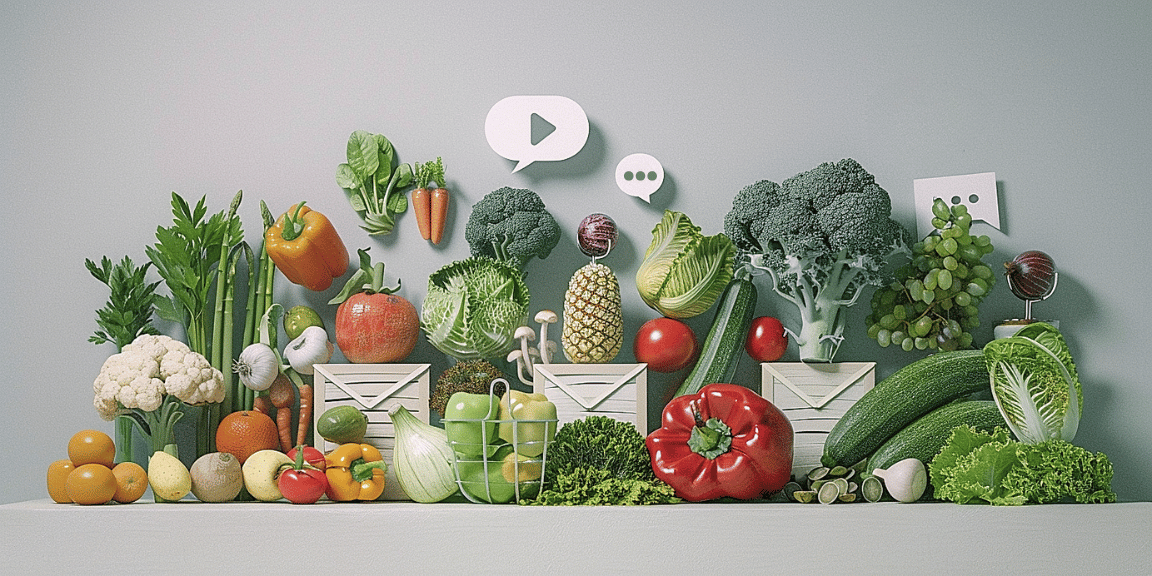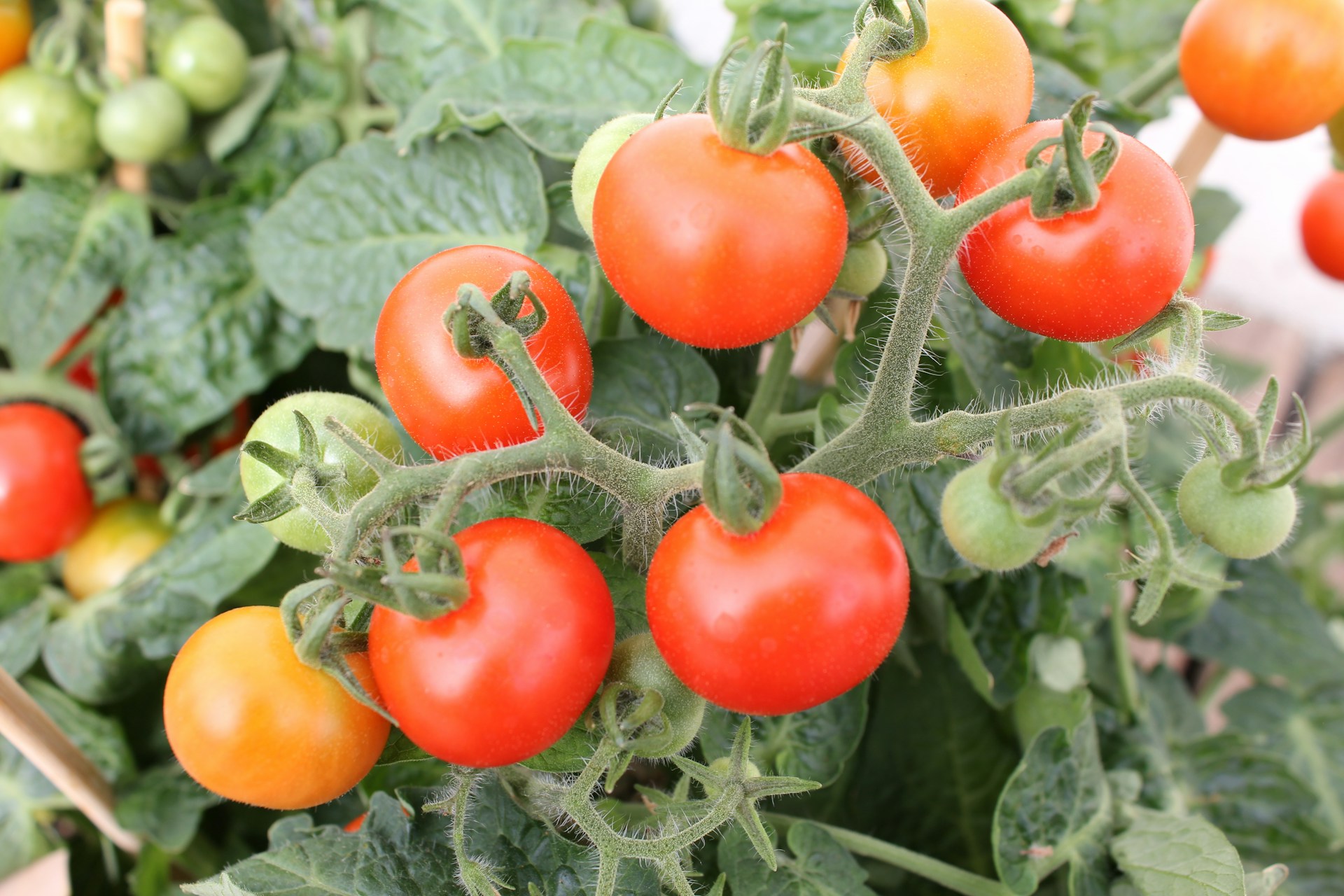In today’s digital age, the distribution of fresh produce is rapidly evolving.
Virtual networking presents a plethora of opportunities for businesses within this industry to enhance their reach, streamline operations, and maximize profits.
Understanding the intricacies of these new strategies is key for success in this competitive landscape.
This blog seeks to provide valuable insights into online networking techniques essential for the modern produce distributor.
Our focus will be on both the conceptual understanding and practical application of various digital tools and methods.
Delving into this intriguing topic, let us unveil the potential benefits that can revolutionize the way your business operates.
Contents
Online Networking Techniques For Produce Distribution
1. Social media advertising and promotions
In the age of digital marketing, social media advertising has emerged as a potent tool for businesses, and produce distributors are no different.
By leveraging the capabilities of advertising on various social media platforms, distributors can effectively reach their potential customers where they are most likely to engage.
Utilizing social media platforms allows businesses to advertise and promote their produce to a global audience, gaining more extensive exposure.
Each social media platform has unique features that distributors can use to tailor their promotional strategies to specific audience groups.
For instance, Facebook’s targeted advertising allows businesses to reach out to a specified demographic, while Instagram offers visual-based promotional opportunities.
Social media promotions not only involve the usual advertisements but can also include creative campaigns that invite interactivity, such as contests or giveaways.
This can boost organic engagement, leading to higher visibility for the business.
Additionally, social media provides an opportunity for businesses to highlight their sustainability practices
Sharing behind-the-scenes glimpses, farm visits, or how the produce is grown can greatly influence customers to choose your produce over others.
Through consistent publishing of content and engagement with users, you can also use social media as a tool to build a community of loyal customers.
One important aspect of social media promotion that needs attention is the use of hashtags.
Hashtags help increase the discoverability of your posts, but using them effectively requires understanding trending hashtags that resonate with your audience.
Lastly, another crucial part of social media advertising is monitoring and adapting.
Keep track of which posts or campaigns get the most engagement and use this information to refine your strategies.
Social media provides an invaluable platform for advertising and promotion in the digital landscape. However, it requires a strategic approach to be effective.
Understanding your audience, creating engaging content, and continually reviewing and updating your strategies are key for successful social media advertising and promotions.
Email marketing is a powerful strategy in online networking for produce distribution.
It offers a personal way to reach out to potential customers, keeping them informed about your products and promotions.
By maintaining regular contact with your customers through email, you keep your brand fresh in their minds.
For maximum effect, manage your customer contact list meticulously and ensure those receiving your emails are genuinely interested in your offerings.
Done right, email marketing with regular newsletters can drastically improve customer retention and acquisition rates.
Email marketing is about both selling produce and building connections. Communication should be consistent, relatable, and genuinely caring about your customer’s wellbeing.
The success of your email marketing campaign relies on creative, engaging content that elicits positive emotions towards your brand and products.
Spend time perfecting your email design and content, ensuring it not only sells but also tells a story about your brand and values.
Be sure to include clear calls-to-action in each newsletter for the most effective engagement with your audience.
Above all, your newsletter should be helpful and valuable, providing more than just promotional content.
Consider mixing educational content, recipes, or sustainability reports with your promotional content to keep your audience engaged and looking forward to your emails.
Test different email types and strategies to discover what works best for your brand and audience.
Ensure to strike the right balance between sending emails too often, which can overwhelm and annoy customers, and not sending enough, which can lead to your audience forgetting about your brand.
Email marketing is a cost-effective and powerful way to spread the word about your produce offerings and manifest connections with your audience.
Embracing a customer-focused approach in your email marketing strategy can substantially increase your brand loyalty and produce sales.
Overall, email marketing with regular newsletters stands as a substantial component of online networking strategies for produce distribution.
3. Participate in Online Farmers Markets
One increasingly prevalent method of produce distribution is via online farmers markets.
With the global shift towards digital platforms, these platforms have emerged as an accessible and efficient way of selling and purchasing produce.
These platforms allow growers to directly sell their products to consumers all across the globe without having to worry about geographical limitations.
They can significantly increase their visibility and reach by joining online farmers markets.
Fortunately, the process of joining these markets is generally simple and painless.
You simply need to apply as a vendor, get approved, and then you can start listing your products.
It’s also important that you regularly monitor your sales and make necessary adjustments in response to customer feedback and market trends.
Many of these online platforms also offer automated shipping and payment processing services that can simplify the process even more.
This makes it easier for you to focus on what you do best: growing your produce.
However, it’s worth noting that these online farming markets often charge commission fees or a membership fee.
You’ll need to factor these into your pricing to ensure you’re still turning a profit.
Reducing transportation and distribution costs in the process is also a significant benefit of these platforms.
Furthermore, these online markets provide a great communication channel between you and the consumers.
They can provide valuable feedback about your products, which you can use to enhance your offerings.
So, in summary, participating in online farming markets can offer a cost-effective, convenient and expansive platform for marketing and distributing your produce worldwide.
Just make sure you understand the fees and requirements involved and that you’re ready to invest the necessary time and resources to make the most of this opportunity.
4. Engage with Customers on Food Forums
The online world is teeming with opportunities to interact and connect with target audiences. One such strategic way to do this is to engage with customers on food forums.
Food forums are essentially discussion board sites focussed on a wide range of food-related topics like cooking, dietary trends, and even food distribution.
These platforms offer a unique opportunity for produce distribution companies to directly engage with existing and potential customers by providing expert advice, answering inquiries, and responding to their concerns.
The interactive nature of these forums bridges the gap between businesses and customers, making these platforms very effective for companies to build a stronger, more personal relationship with their customers.
Arming your customers with the knowledge they need not only creates goodwill but also positions your firm as an authority in the industry.
Before you start engaging with users on these platforms, identify potential forums where your target audience is likely to be present.
This could be a mainstream food forum like Chowhound or more niche, like a local online farmers’ market forum.
When you find suitable forums, create an account there and be sure to write a complete profile that gives members a snapshot of who you are and what your business is about.
Ensure that your avatar and username are professional and directly related to your business, as these will be the first impression users will have of you.
When participating in discussions, your posts should be thoughtful, informative, and relevant.
If someone asks a question about a product you supply, jump in to offer your expert insight but avoid blatant self-promotion.
Do not forget the golden rule of forum etiquettes: add value to the conversation.
If you’re only commenting to promote your business, users will sniff it out, which could lead to backlash.
However, if you’re genuinely there to interact and share knowledge, the promotion will naturally follow.
Think of it as an opportunity to show potential customers the value your products offer rather than just telling them.
Regularly participating in food forums can also give you insights into current market trends and customers’ preferences and concerns, framing your future marketing strategies.
5. Collaborate with food bloggers/influencers.
As a producer, one lucrative online networking technique to consider is collaborating with food bloggers and influencers.
These professionals have an established and dedicated online following, making them a prime resource for promoting your produce.
The power of these influencers lies in their ability to persuasively recommend products to their followers.
Collaborating with influencers allows you to reach a wider customer base due to their large, diverse, and engaging following.
Before choosing to collaborate, it’s important to find influencers who share the same values and target audience as your brand.
This is because the collaboration needs to be authentic and relatable to their followers for it to effectively drive sales.
Once you’ve established connections with suitable influencers, you can send them samples of your produce for review.
These reviews can either be freely written by them based on their actual experiences or you can ask them to highlight specific benefits or features of your produce.
Also, you can encourage influencers to create recipes or tutorials using your produce, showing their followers fun and interesting ways your products can be used.
This method not only helps to demonstrate the versatility of your produce, but also creates a sense of ‘value add’ for potential customers.
In return, you can offer them exclusive discounts for their followers, promoting a win-win situation.
Make sure to keep a constant line of communication with your collaborators, providing clear instructions and timely updates to ensure a successful partnership.
Tracking the success of these collaborations will give an idea about the impact of these partnerships in terms of increased web traffic, social media following, and most importantly, sales.
Celebrate and promote the successes from these collaborations on your own social media platforms, earning you credibility and attracting other influencers for future partnerships.
Keep in mind, this collaboration with influencers should not be a one-off marketing strategy, but rather a consistent, long-term relationship.
Remember, building a successful online presence is about creating authentic relationships that translate into increased visibility and sales.
The Bottom Line
The multifaceted approach to advertising and promoting a farm or agricultural business in the digital age is a testament to the power of marketing’s evolution.
Social media adverts, email newsletters, participation in online farmer’s markets, interaction on food forums, and collaborations with food bloggers and influencers, each play pivotal roles in carving out a business’ digital presence.
The combination of these strategies can significantly enhance product visibility, foster a vibrant customer community, fostered by a constant engagement and drive sales.
Therefore, leveraging these digital marketing strategies is not just beneficial, but essential, for farms to thrive in the 21st century marketplace.




